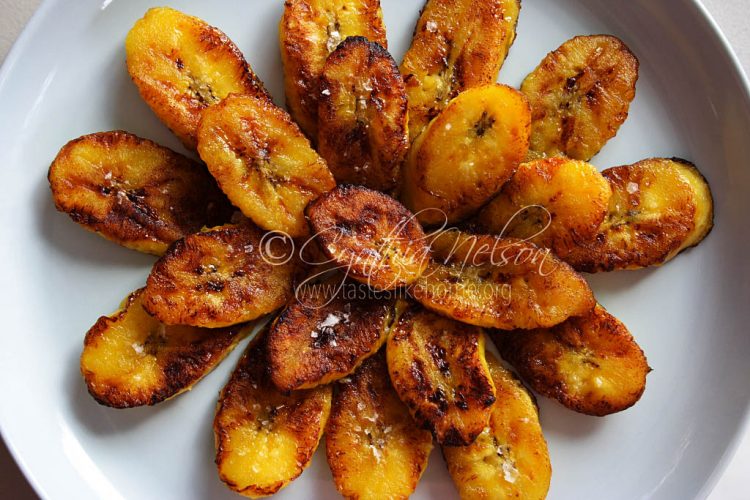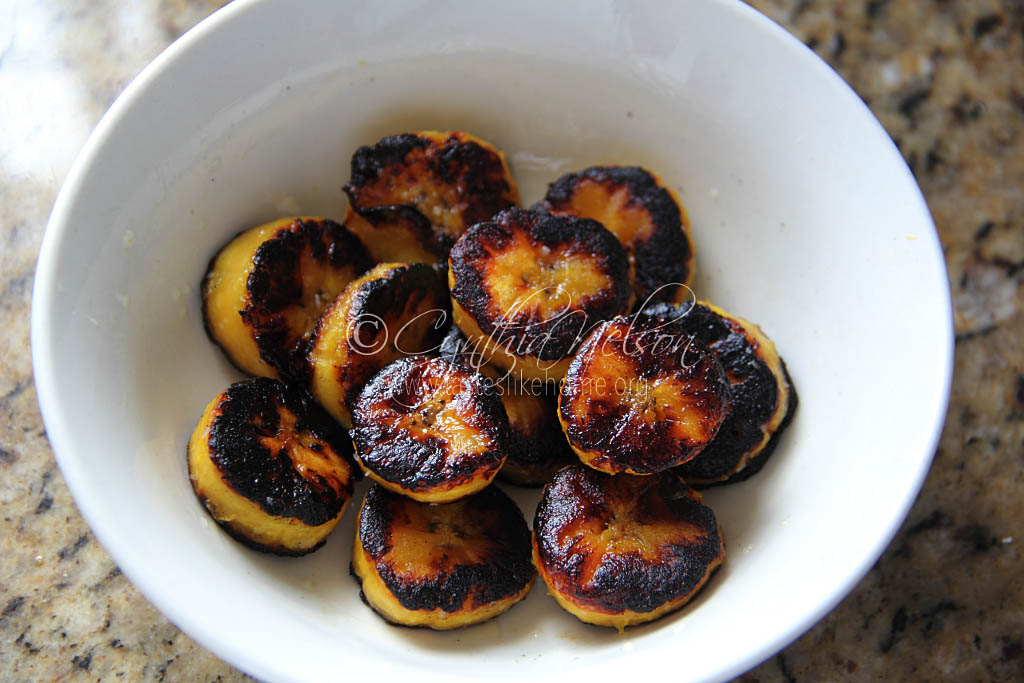
Earlier in the week, while on one of my early morning walks, the discussion switched from local politics, the economy, and the cost of food to the selection of ripe plantains and the frying of ripe plantains. One of my male counterparts, scorned at the idea of buying ripe plantains with black spots on the skin (even though the body of the plantains were still firm). He considered the plantains at that stage to be rotten and felt they should be sold for cents, if not given away. My other two walking companions tore into him (I remained quiet because they were doing a good enough job at defending the black-skinned ripe plantains). Things became so hotly contested that they insisted we stop and draw into the argument a couple of other walkers who had completed their rounds and were sitting on a bench relaxing. Lawd! De noise. And you know how loud some people can get. As I looked on and listened, I said to myself, it is a good thing we are all 3 to 6 feet apart because of Covid-related social distancing, if not, some people might pelt blows (Lol).
There was no conclusion to the high-energy discussion and people agreed to disagree. The two concluding points were as follows:

1. The cost of ripe plantains with blackened skins where there was already give (as in the flesh was beginning to soften), should be sold for less than that of firm ripe plantains, even if the skin was partially black.
2. The frying and eating of ripe plantains was a matter of personal/individual preference, therefore, no one managed to convince the other of how they should fry ripe plantains.
As I drove home, reflecting on the discussion, I asked myself how I liked my fried ripe plantains. I realised that I am pretty open about the dish with one caveat, I do not like my ripe plantains deep fried because they absorb too much oil due to their heavy sugar and moisture content at that stage. I also recalled that a couple of years ago when I had invited some friends over for a meal, I had shared the menu with them, and I remember my friend’s husband telling me that they liked their fried ripe plantains, burnt, not dark, but with burnt edges. That day I as I cooked the plantains, I let them go longer to get the desired result. Before that, anytime I fried ripe plantains and they were burnt was by accident, because I wasn’t paying attention or doing something else. I do like some dark brown edges that can crisp slightly but this deliberate burning was new to me. The taste wasn’t bad, there was the obvious sweetness with a hint of bitterness at the back end. Very interesting.
Anyway, after the hullabaloo during the week, I set about asking a number of people about fried ripe plantains. It was enthralling listening to peoples’ preferences which ranged from the
stage of ripeness of the plantain, to the cut, to the texture of the finished product, to what they like to eat the fried plantains with and when.
Here are the highlights of what some said.
For breakfast, whether eaten alone or with eggs, the plantains should be ripe with an all-yellow skin but not half ripe. The skin of the plantain should be a deep yellow that is beginning to dull, yet there should be no black spots on the skin. There were many who preferred it this way also if the plantains were to be served as a side dish and not just something that worked as a treat or condiment with the meal.
For the lovers of black-skinned ripe plantains, whether partially or fully:
Starting with the cut, preferences were for the plantains to be cut into rounds, sliced diagonally, lengthways, or cut into 2-inch round chunks.
Some preferred the plantains to be deep fried while others wanted them fried in very shallow oil.
Like my friends, some wanted the plantains cooked until fully charred, burnt, while others preferred them browned, dark and lightly browned but definitely not burnt.
And finally, to salt or not to salt. This was a heated one and really came down taste – on the individual level as well as what they grew up seeing their elders do. A slight sprinkling of salt on the plantains just as they are removed from the hot pan, melts into the plantains creating an exciting play of sweet and salt on the palate when eaten.
For some people, the eating of fried ripe plantains is a daily accompaniment to their meals just as a condiment like pepper sauce. It matters not what they have cooked/are eating, a few pieces of fried ripe plantains must be on the plate. For others ripe plantains only fried and eaten with certain dishes like Cook-up Rice, Pelau, Rice or Peas.
As for me, here’s how I like my fried ripe plantains:
First, I like my plantains very ripe – black skinned but still firm flesh; I would not be put off if the flesh gives just a little, but not mushy.
Cut on the bias or lengthways.
Fried in very little oil, just a little more than coating the bottom of the pan.
Fried until dark or lightly browned (and that simply depends on my mood).
I have to ask:
1. How do you like your fried ripe plantains?
2. Is your household divided on this tasty treat? Do you find yourself frying the plantains in different ways to satisfy their preferences?
Cynthia






